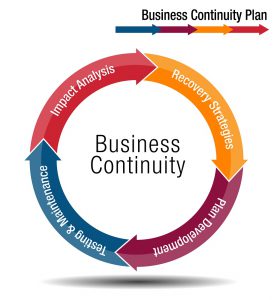 Although disaster recovery and business continuity are often thought to be one in the same, the fact is, they have two different objectives. You can choose to focus on one more than the other, but to be confidently prepared for the unthinkable, you really should have both.
Although disaster recovery and business continuity are often thought to be one in the same, the fact is, they have two different objectives. You can choose to focus on one more than the other, but to be confidently prepared for the unthinkable, you really should have both.
What is Disaster Recovery?
The goal of a good disaster recovery plan is to get restore systems to optimum running order immediately following a disaster. This involve restoring IT infrastructure and retrieving copies of data that is stored offsite without too much focus on making the business operational during the critical event.
Sustaining a disaster recovery plan ensures functionality of systems after a catastrophic event. Recovery time is the central focus of recovery planning, because the sooner business data can be restored, the quicker an organization can restart normal functioning. For the proper execution of disaster recovery plans, all company employees must know exactly how to react and what their role is once the plan goes into effect.
What is Business Continuity?
The business continuity plan ensures that all normal business operations can resume during a disaster. This includes access to all necessary data and a secure place for where employees can continue to work. To be successful, a business continuity plan ensures unfettered operation of all network connections, online systems, phones, network drives, servers, and business applications with no downtime.
Business continuity is business focused, relying on expert management oversight and planning to keep business running as usual; whereas, disaster recovery is data focused. A solid business continuity plan will limit downtime and prevent the company from going offline.
Why Both are Important
While business continuity is the first line of defense against disasters which threaten the proper function of business; disaster recovery is a must-have for organizations which cannot function without vital business data.
Disaster recovery is an important part of the business continuity canopy it is wise to employ both strategies for full protection. Disaster recovery procedures are more preventative in nature than continuity tools, which are typically used to maintain smooth business operations.
It’s good to know you can get help with both right here.
